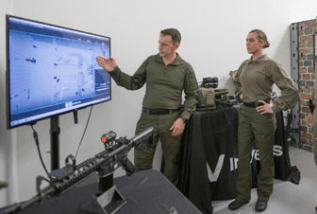Gamification In The Public Sector
Gamification engages people at a psychological level, which is much more powerful than typical transactional involvement approaches.
— Brian Burke, Gamify: How Gamification Inspires Individuals to Do Remarkable Things
Federal government training has actually never ever been a lot more critical or more complicated. From active shooter preparedness to cybersecurity preparedness, public servants are increasingly contacted us to browse high-stakes situations where decisions can have life-or-death consequences. Standard training techniques like static presentations, dense guidebooks, or occasional workshops frequently fall short to involve or prepare participants for the dynamic obstacles they deal with.
Get in gamification: the application of video game layout principles to non-game contexts. In federal government training, gamification is more than a buzzword; it’s a proven method that improves interaction, improves expertise retention, and develops real-world preparedness. Whether it’s utilizing Enhanced Truth to simulate emergencies, producing major ready disaster action, or immersing cyber teams in risky attack circumstances, government companies are embracing gamified finding out to change training right into a hands-on, high-impact experience.
Allow’s check out exactly how 3 popular examples– DHS’s AR-based active shooter training, FEMA’s serious video games, and the ITU’s Cyber Ranges– demonstrate the power and capacity of gamification in the general public industry.
Examples Of Gamification In Government
DHS: Enhanced Reality For Active Shooter Training
Via the National Urban Protection Modern Technology Research Laboratory (NUSTL), the United State Department of Homeland Security (DHS) has actually deployed Increased Fact (AR) systems to sustain energetic shooter action training. [1] These systems overlay digital hazards and items onto real-world settings, turning a regular classroom or office into a vibrant training ground. Trainees relocate with physical areas while reacting to digital simulation, all offered in actual time via AR headsets or smart phones.

Picture from dhs.gov [1]
Why It Works
AR gamifies the environment itself, giving immersive responses loopholes that simulate real-life stressors. Individuals need to examine dangers, choose, and interact under stress– just like they would certainly throughout an actual emergency situation. This hands-on, scenario-based training improves situational awareness and boosts retention far past conventional lecture-based formats.
The outcome? Initial responders exit with muscle mass memory and confidence that fixed drills seldom provide.
FEMA: Serious Gamings For Catastrophe Reaction
The Federal Emergency Administration Firm (FEMA) makes use of significant games– interactive, scenario-based simulations– to prepare public authorities for natural disasters and complicated emergency situations. [2] One instance is FEMA’s Emergency Administration Institute’s Virtual Tabletop Exercises (VTTX), which enable participants to role-play catastrophe situations in a digital environment. Whether working with a storm evacuation or replying to a chemical spill, players choose, assign sources, and adapt to altering problems.
Why It Functions
Major video games enhance systems believing, permitting individuals to see exactly how their choices influence others in real time. They likewise promote cross-agency cooperation, since players must work as teams to resolve diverse challenges. With integrated racking up, time restraints, and post-game responses, these simulations produce a compelling knowing experience that reflects the intricacy of real-life situation management.
FEMA’s use gamification supports not just readiness however additionally important representation, making it possible for leaders to examine their protocols and boost them prior to a catastrophe ever before strikes.
ITU: Cyber Ranges And International Risk Response
The International Telecommunication Union (ITU)– a UN firm– utilizes Cyber Varies to educate nationwide, local, and global cyber reaction teams on how to face digital threats like ransomware, DDoS assaults, and crucial infrastructure hacks. [3] These gamified simulations place individuals in a virtual environment where they must protect networks, recognize vulnerabilities, and have assaults under time pressure.

Photo from itu.int [3]
Why It Works
Cybersecurity dangers develop rapidly, and standard “checklist” training is insufficient. Cyber Ranges create high-fidelity simulations that simulate the complexity of modern cyber warfare. Gamification elements– racking up systems, substitute foes, real-time case escalations– drive interaction and develop the useful skills needed for modern-day digital defence.
What makes ITU’s method especially effective is its collaborative global emphasis. Teams from different nations can take part in shared simulations, promoting shared requirements, fast skill-building, and worldwide cybersecurity resilience.
Why Gamification Issues For Government Training
These instances reveal a bigger fact: gamification isn’t nearly enjoyable– it has to do with feature. In high-stakes fields where lives, safety, and public depend on are on the line, gamification deals:
- Engagement– Interactive situations enhance learner inspiration and minimize cognitive exhaustion.
- Retention– Gamified training activates multiple finding out techniques (visual, auditory, kinesthetic), enhancing memory and understanding.
- Feedback– Real-time scoring and debriefs supply actionable understandings for learners and leaders.
- Versatility– Simulations can be customized for varied audiences and transforming risks.
- Cooperation– Team-based gameplay cultivates cross-functional coordination and interaction.
As innovation advances and public difficulties expand even more complex, gamification continues to play a vital duty in preparing government specialists– not just to discover, however to lead in crisis.
From Augmented Reality in police to disaster response video games and cyber war simulations, gamification is no longer a future pattern; it’s a current imperative. For agencies looking for to develop resistant, ready, and dexterous groups, it’s time to raise the strategy with game-based knowing.
Recommendations:
[1] Augmented Truth (AR) Training Equipments for First Responders
[2] Significant games in FEMA Regional Response
[3] CyberDrills

